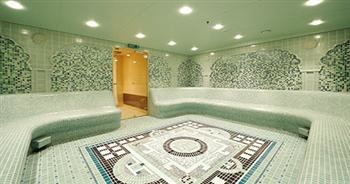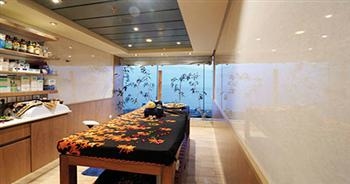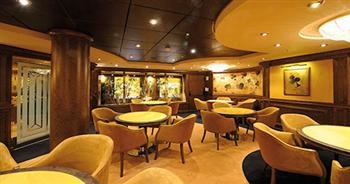Please complete the form below



Split by lakes and surrounded by sea, an energetic and hip waterside vibe permeates Copenhagen, one of Northern Europe’s most user-friendly (and trendy) capitals.
Copenhagen city centre is waiting to be enjoyed on an MSC Northern Europe cruise excursion. It’s a welcoming, compact city with a centre largely given over to pedestrians (and cyclists) and an emphasis by day on café culture and top-notch museums.The historic core of the city is Slotsholmen, originally the site of the twelfth-centurycastle and now home to the huge Christiansborg complex.
Just across the Slotsholmen Kanal to the north is the medieval maze of Indre By (“inner city”), while to the south the island of Christianshavn is adorned with cutting-edge architecture in addition to the alternative enclave of Christiania.
North-east of Indre By are the royal quarters of KongensHave and Frederiksstaden, while to the west the expansive Rådhuspladsen leads via Tivoli Gardens to Central Station and the hotspots of Vesterbro and Nørrebro. Just off hectic Vesterbrogade outside the station is Copenhagen’s most famous attraction, Tivoli, an entertaining mixture of landscaped gardens, outdoor concerts and fairground rides.
A shore excursion on your MSC Northern Europe cruise can be the opportunity to discover Helsingør’s Kronborg Castle too. The present castle dates from the sixteenth century when it jutted into the sound as a formidable warning to passing ships not to consider dodging the toll, and it remains a grand affair, enhanced immeasurably by its setting; the interior, particularly the royal chapel, is spectacularly ornate.
Beneath the castle are the casemates, gloomy cavernous rooms that served as soldiers’ quarters during times of war.
The Warnemünde quarter in Rostock is a famous German seaside resort that you can visit when you reach the German coasts on your MSC cruise of northern Europe.
At the mouth of the river Warnow, in the Baltic Sea, Warnemünde will surprise you with its villas, hotels and the large white and silver beach. Its heart is Am Strom, next to the port, where the homes of old captains and fishermen have been turned into coffee shops and boutiques. With an excursion during the cruise, you can continue towards Schwerin.
Surrounded by lakes and with a fairytale Schloss that tickles the imagination, the town represents a pleasant surprise, given by the architecture and spirit of a historic capital. Continuing the excursion you can admire Lubeck, one of the few cities along Europe’s northern coasts that preserves the glory of medieval times.
For more than two centuries the standard bearer of the Hanseatic League, this was one of the wealthiest and most powerful of European cities, the Venice of the Baltic. The commercial opulence is best expressed in its architecture: from the oldest Rathaus in Germany to the churches with the tallest bell-towers to the merchants’ mansions.
Lubecca is the first city in Northern Europe to be included in the list of UNESCO world heritage sites in 1987. Finally, you should not leave out a visit to the cosmopolitan Berlin, the largest and liveliest city in Germany. Amongst the monuments to visit are the Brandebourgh Gate. Situated close to the Reichstag, the seat of the German parliament, the monument, designed on the model of Athens’ Acropolis, was built as the city’s arch of triumph in 1791 and soon became the symbol of unified Germany.
The Brandenburg Gate looms over the ornamental gardens in Pariser Platz which extends eastwards towards the wide, tree-lined Unter den Linden avenue, that means “Beneath the linden trees”, flanked by shops and cafés.
When you set ashore from your cruise ship for a vacation in Akureyri, you should take an excursion to Lake Myvatn. To get there you will pass through Eyjafjördur, where you can enjoy a splendid view of the city port.
The first worthy stopover is in Godafoss, here the waters if the Skjálfandafljót form a 12 meter tall waterfall. According to the legend, in the year 999 or 1000, one of the Icelandic rulers proclaimed Christianity as the official religion of Iceland and hurled the idols of the Nordic gods (Odin, Thor and Freyr, to which probably the waterfall was previously dedicated) in its waters.
A stained glass window of the church of Akureyri (Akureyrarkirkja) depicts this legend. As you continue along the Icelandic wild nature, with its incredible variety of colours, varying from the bright green meadows to the red minerals erupting from the depths of the island, one reaches the pseudo-craters of Skutustaðir, generated by underground vapours produced by an eruption 2500 years ago.
From here one can reach Dimmuborgir, an incredible labyrinth of lava, where amidst peculiar formations rises the Kirkjan, a natural church with two pointed-arch portals and, inside, real chapels with altars. You can end your visit at the Viti crater, known also as the Inferno, one of the many mouths of the central Krafla volcano.
If you feel like tackling the steep climb from its internal lake, you can also enjoy a relaxing hot bath. Here you will also find the Askja, an immense caldera that extends for 50 sq.km., a desert of lava and the finest sand resembling moon dust: this in fact was where the astronauts of the Apollo 11 trained for their lunar landing.
Before returning to Akureyri, if you feel curious, you can stop to visit Santa Clause’shouse, about ten kilometres south, a delightful Christmas toy shop, with the largest Advent calendar in the world.
When your MSC cruise to northern Europe takes you to the north western point of Iceland, you will cast anchor at Isafjordur, a small town of ancient origins.
In Isafjordur you will find the oldest standing Icelandic house, built in 1743. In the periphery of Bolungarvík, the northernmost location in the western fjords, one can instead visit Ósvör, once a fisherman’s village and now an open air museum.
The past re-emerges also in the old town of Nedstikaupstadur, where Icelandic and Norwegian merchants first, and then British and German ones, would meet in the mid-15th century in the bay of Isafiord. Here, in the second half of the 18th century, Krambud (the shop) was built, that was converted in the 20th century into a private home; as well as Faktorshus (the farmers house); Tjoruhus (the tar house) and Turnhus (the tower house) used as warehouses and fish processing centres.
While on your MSC cruise to Northern Europe, if you want to get an idea of how Icelanders used to live in the past, try an excursion to Vigur, literally the “spear-shaped island”. Its waters host a great deal of sea lions who feed on marine birds such as the puffin, the black guillemot, the aggressive arctic tern (who can attack people if it feels threatened) and the common eider.
Another spectacle of nature is the Naustahvilft, the “troll’s seat”, a large depression shaped like a half moon in the flat mountains that surround the Isafjordur fjord. Legend has it that it was created by a troll caught by the sunlight sitting on the mountain with its feet in the water.
Whether you believe in the legend or more likely in a valley dug out by the ice during the last ice age, try this brief but intense excursion, it is certainly worth it.
The Prince Christian Sound is a waterway in Southern Greenland. It separates the mainland from Sammisoq and other islands of the Cape Farewell Archipelago near the southernmost tip of Greenland. The name was given in honour of the prince, later king Christian VIII of Denmark.
Nuuk, on the southwestern coast of Greenland, is the world’s most northerly capital and a genuine arctic jewel. This MSC Northern Europe Cruises destination is known for its colourful houses, unspoiled mountain backdrop, waterfalls, and icebergs.
Ilulissat is a beautiful town set on Greenland’s Kangia Fjord, famed for its archaeological finds. The site reveals a sizeable 3500-year-old area, once occupied by the Saqqaq and Dorset tribes. This fascinating MSC Northern Europe Cruises destination offers an array of memorable adventures. See gigantic icebergs, rugged coastlines, and charming rural villages.
Ilulissat is a beautiful town set on Greenland’s Kangia Fjord, famed for its archaeological finds. The site reveals a sizeable 3500-year-old area, once occupied by the Saqqaq and Dorset tribes. This fascinating MSC Northern Europe Cruises destination offers an array of memorable adventures. See gigantic icebergs, rugged coastlines, and charming rural villages.
The port of Qaqortoq is the largest city in Southern Greenland and is set in a system of fjords. This MSC Northern Europe Cruises destination is perched on an inlet in the Davis Strait and boasts 18th-centruy colonial architecture, stunning natural landscapes, and an attractive landmark fountain.
Reykjavík is mirrored in the waters of its bay, as you can see when your cruise ship sets anchor in the port. The quays along the seafront host a variety of shops, live music clubs and cafés.
Take a stroll down Frakkastigur up to Lækjartorg, to admire the Sólfar, also known as the Sun Voyager, a large modern steelsculpture by Jón Gunnar Árnason, that represents a Viking vessel, with the bow pointing towards the north.
Go back in history as you reach the historic centre, in the districts of Aðalstræti and Suðurgata, where you can still see the remains of some primitive Icelandic dwellings. Also the church of Hallgrímur, probably the most important architectural monument in Reykjavik, is worth a visit. As you will discover during your MSC cruise of Northern Europe, geothermal energy positively conditions the life of the entire country and there is an abundance of spas.
Don’t miss an excursion to the Þingvellir national park, in the south west region of the island, a UNESCO world heritage site since 2004. On the northern shores of the Þingvallavatn, the largest Icelandic lake, the Öxará river forms the Öxaráfoss waterfall in the vicinity of Almannagjá, the largest cleft in this land.
If you like waterfalls, you should not miss a visit to Gullfoss, in the south east of the island: the river Hvítá here drops down 11 and then 21 metres forming the queen of all Icelandic waterfalls and then continues along a narrow gorge in the plateau. In this area we also find the Strokkur, the only geyser that regularly erupts every 4-8 minutes. Then proceed to Geysir, in the Haukadalur valley, the oldest known geyser, from which the term originates.
Its eruptions spray boiling water up to 60 metres into the air, but often reach higher than 100 metres: it is the tallest of the active geysers.
Reykjavík is mirrored in the waters of its bay, as you can see when your cruise ship sets anchor in the port. The quays along the seafront host a variety of shops, live music clubs and cafés.
Take a stroll down Frakkastigur up to Lækjartorg, to admire the Sólfar, also known as the Sun Voyager, a large modern steelsculpture by Jón Gunnar Árnason, that represents a Viking vessel, with the bow pointing towards the north.
Go back in history as you reach the historic centre, in the districts of Aðalstræti and Suðurgata, where you can still see the remains of some primitive Icelandic dwellings. Also the church of Hallgrímur, probably the most important architectural monument in Reykjavik, is worth a visit. As you will discover during your MSC cruise of Northern Europe, geothermal energy positively conditions the life of the entire country and there is an abundance of spas.
Don’t miss an excursion to the Þingvellir national park, in the south west region of the island, a UNESCO world heritage site since 2004. On the northern shores of the Þingvallavatn, the largest Icelandic lake, the Öxará river forms the Öxaráfoss waterfall in the vicinity of Almannagjá, the largest cleft in this land.
If you like waterfalls, you should not miss a visit to Gullfoss, in the south east of the island: the river Hvítá here drops down 11 and then 21 metres forming the queen of all Icelandic waterfalls and then continues along a narrow gorge in the plateau. In this area we also find the Strokkur, the only geyser that regularly erupts every 4-8 minutes. Then proceed to Geysir, in the Haukadalur valley, the oldest known geyser, from which the term originates.
Its eruptions spray boiling water up to 60 metres into the air, but often reach higher than 100 metres: it is the tallest of the active geysers.
When you step ashore from your MSC cruise in Invergordon, you’ll be enthralled by the Scotland’s Northwest Highland region, which covers the northern two-thirds of the country and holds much of the mainland’s most spectacular scenery.
You may be surprised at just how remote much of it still is: the vast peat bogs in the north, for example, are among the most extensive and unspoilt wilderness areas in Europe, while a handful of the west coast’s isolated crofting villages can still be reached only by boat.
The only major city, Inverness, is best used as a springboard for more remote areas where you can soak in the Highlands’ classic combination of mountains, glens, lochs and rivers, surrounded on three sides by a magnificently pitted and rugged coastline. Inverness Castle is closed to the public, but the Inverness Museum and Art Gallery offers an insight into the social history of the Highlands, with treasures from the times of the Picts and Vikings.
A shore excursion on your MSC Northern Europe cruise can also be the opportunity to discover Loch Ness. Twenty-three miles long, unfathomably deep, cold and often moody, Loch Ness is bounded by rugged heather-clad mountains rising steeply from a wooded shoreline with attractive glens opening up on either side. Its fame, however, is based overwhelmingly on its legendary inhabitant Nessie, the “Loch Ness monster”, who ensures a steady flow of hopeful visitors to the settlements dotted along the loch, in particular Drumnadrochit.
The first mention of a mystery creature crops up in St Adamnan’s seventh-century biography of St Columba, who allegedly calmed an aquatic animal that had attacked one of his monks. Nearby, the impressive ruins of Castle Urquhart – a favourite monster-spotting location – perch atop a rock on the lochside.
Split by lakes and surrounded by sea, an energetic and hip waterside vibe permeates Copenhagen, one of Northern Europe’s most user-friendly (and trendy) capitals.
Copenhagen city centre is waiting to be enjoyed on an MSC Northern Europe cruise excursion. It’s a welcoming, compact city with a centre largely given over to pedestrians (and cyclists) and an emphasis by day on café culture and top-notch museums.The historic core of the city is Slotsholmen, originally the site of the twelfth-centurycastle and now home to the huge Christiansborg complex.
Just across the Slotsholmen Kanal to the north is the medieval maze of Indre By (“inner city”), while to the south the island of Christianshavn is adorned with cutting-edge architecture in addition to the alternative enclave of Christiania.
North-east of Indre By are the royal quarters of KongensHave and Frederiksstaden, while to the west the expansive Rådhuspladsen leads via Tivoli Gardens to Central Station and the hotspots of Vesterbro and Nørrebro. Just off hectic Vesterbrogade outside the station is Copenhagen’s most famous attraction, Tivoli, an entertaining mixture of landscaped gardens, outdoor concerts and fairground rides.
A shore excursion on your MSC Northern Europe cruise can be the opportunity to discover Helsingør’s Kronborg Castle too. The present castle dates from the sixteenth century when it jutted into the sound as a formidable warning to passing ships not to consider dodging the toll, and it remains a grand affair, enhanced immeasurably by its setting; the interior, particularly the royal chapel, is spectacularly ornate.
Beneath the castle are the casemates, gloomy cavernous rooms that served as soldiers’ quarters during times of war.
MSC Poesia is an innovative cruise ship with elegant style that brings traditional craftsmanship to creative designs.
From the spectacular foyer waterfall to the Zen Garden, authentic Japanese Sushi bar and opulent MSC Aurea Spa, MSC Poesia is an elegant cruise ship and perfect for total relaxation. The MSC Aurea Spa has a steam room, sauna, a whole range of beauty treatments and some of the most soothing massages at sea.
For our more active guests, sports and fitness activities include a basketball court, tennis court, shuffleboard, state-of-the-art gym and mini-golf. There are 3 swimming pools, 4 whirlpool baths and a giant poolside cinema screen.
Children and teens are equally well looked after and have their own clubs and parties, a dedicated Stone Age and Dinosaur Play Area, access to exhilarating video games and even a DJ disco!
Food is always at the heart of an MSC cruise and the cuisine on board MSC Poesia is no exception. Each dish is prepared with fresh, quality ingredients by our skilful chefs and served in the elegant surroundings of the main dining rooms Il Palladio and Le Fontane.
The varied lounge bars offer wine tasting in the Grappolo d’Oro , refreshing mojitos in the Mojito cocktail bar and indulgent cigars and spirits in the cigar room.
Library
Nightclub
Shuffle Board
A la carte restaurant
Bar
Cafe
Lounge Bar
Sushi Bar
Art Gallery
Duty-free shop
Photo Shop
Security Safe
Shopping Gallery
Shore Excursion Office
Fitness Center
Gym
Tennis Court
Yoga
Hair Salon
Hot Tubs
Jacuzzi
Sauna
Spa
Cigar Bar
Disco
Theatre
Please complete the form below